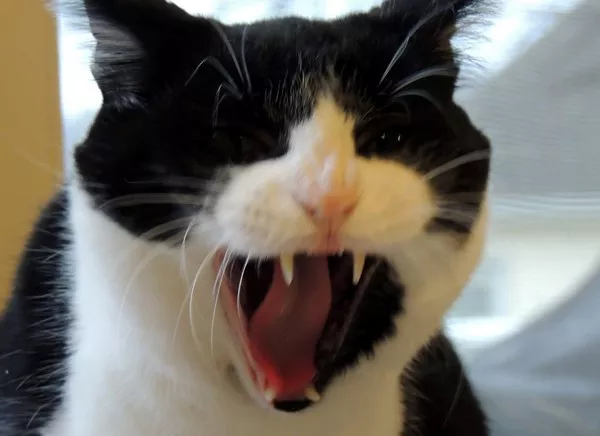Cats are often seen as independent creatures, capable of fending for themselves for extended periods. However, the reality of leaving a cat alone for a month is far more complex. While some cats may manage well in solitude, others can experience anxiety, stress, and behavioral issues when left alone for an extended time. This essay explores the various aspects of leaving cats alone for a month, including the psychological and physical well-being of the cat, preparation strategies, alternatives to leaving them alone, and tips for ensuring their safety and comfort during your absence. By understanding these factors, cat owners can make informed decisions that prioritize their feline companions’ health and happiness.
Understanding Feline Independence
Cats are often characterized by their independent nature, which can lead owners to believe that they can easily be left alone for long periods. However, this independence does not mean that cats do not require social interaction, mental stimulation, and physical care. Understanding the nuances of feline behavior is crucial for making informed decisions about leaving a cat alone.
The Nature of Cats
Social Creatures: While cats are solitary hunters by nature, they are also social animals that form strong bonds with their human companions. Many cats thrive on interaction, play, and companionship, and prolonged isolation can lead to feelings of loneliness and anxiety.
Territorial Behavior: Cats are territorial animals that feel most secure in their familiar environment. Changes in their routine or the absence of their owners can disrupt their sense of security, leading to stress.
Routine and Predictability: Cats are creatures of habit and thrive on routine. Sudden changes in their environment or schedule can cause anxiety and behavioral issues.
The Effects of Leaving Cats Alone for a Month
Leaving a cat alone for a month can have significant effects on its physical and psychological well-being. The extent of these effects can vary based on the cat’s personality, age, health, and previous experiences with solitude.
Psychological Effects
Separation Anxiety: Many cats experience separation anxiety when their owners leave for extended periods. Symptoms can include excessive vocalization, destructive behavior, and changes in eating or litter box habits.
Depression: Extended periods of isolation can lead to depression in cats. Signs may include lethargy, decreased appetite, and a lack of interest in play or interaction.
Stress-Related Behaviors: Stress can manifest in various ways, including excessive grooming, hiding, or aggression. Cats may also develop new behaviors, such as scratching furniture or knocking over objects.
Physical Effects
Health Risks: Cats left alone for a month may face health risks, especially if they have pre-existing conditions or require medication. Lack of regular monitoring can lead to untreated health issues.
Dietary Issues: Cats may overeat or not eat enough when left alone, leading to gastrointestinal problems or weight changes. Access to fresh water is also critical, as dehydration can occur quickly.
Litter Box Maintenance: A dirty litter box can lead to hygiene issues and stress for cats. Cats may refuse to use a dirty litter box, leading to accidents and further behavioral problems.
Preparing to Leave Your Cat Alone
If leaving your cat alone for a month is unavoidable, thorough preparation is essential to ensure their well-being during your absence. Here are some key steps to take:
Assess Your Cat’s Needs
Before making any plans, evaluate your cat’s personality, health, and needs. Consider the following factors:
Age: Kittens and senior cats may require more attention and care than young adult cats.
Health: Cats with medical conditions or those on medication need special consideration.
Behavioral Traits: Some cats are more independent than others; understanding your cat’s temperament is key.
Arrange for Care
While some cats may manage alone for short periods, leaving them for an entire month without supervision is not advisable. Here are some options for care:
Pet Sitter: Hiring a professional pet sitter can provide daily interaction, feeding, and care. A sitter can also monitor your cat for any health issues or behavioral changes.
Family or Friends: If a pet sitter is not an option, consider asking a trusted friend or family member to check on your cat regularly.
Boarding Facility: For a more structured environment, consider boarding your cat at a reputable facility. This option ensures that your cat receives regular care and social interaction.
Create a Safe Environment
Before leaving, ensure that your home is a safe and comfortable environment for your cat:
Secure Hazardous Areas: Make sure to secure any areas that could pose a danger to your cat, such as cleaning supplies, electrical cords, and small objects that could be swallowed.
Comfort Items: Leave familiar items, such as blankets, toys, and scratching posts, to provide comfort during your absence.
Hide Valuables: Cats may engage in destructive behavior when bored or anxious. Hide any valuables or items that could be damaged.
Stock Up on Supplies
Ensure you have sufficient supplies for your cat’s needs during your absence:
Food: Provide enough food for the duration of your absence, considering your cat’s dietary needs.
Water: Invest in a water fountain or multiple water bowls to ensure your cat has access to fresh water.
Litter: Stock up on litter and ensure that the litter box is clean before you leave.
Strategies for Leaving Cats Alone
If leaving your cat alone is unavoidable, there are several strategies you can implement to minimize stress and ensure their well-being:
Maintain Routine
Cats thrive on routine, so try to maintain their regular feeding and play schedule as much as possible. This consistency can help reduce anxiety and provide a sense of security.
Interactive Toys and Enrichment
To keep your cat mentally stimulated during your absence, consider providing interactive toys and enrichment activities:
Puzzle Feeders: These toys can make mealtime more engaging and provide mental stimulation.
Automated Toys: Battery-operated or remote-controlled toys can keep your cat entertained while you are away.
Window Perches: Setting up a perch by a window allows your cat to observe the outside world, which can provide entertainment and stimulation.
Use Technology
Modern technology can help you stay connected with your cat while you are away:
Pet Cameras: Consider investing in a pet camera that allows you to monitor your cat remotely. Some cameras even have two-way audio, allowing you to communicate with your pet.
Automated Feeders: These devices can dispense food at scheduled times, ensuring your cat receives meals even when you are not there.
Gradual Desensitization
If your cat is not used to being alone, gradually desensitize them to your absence before leaving for an extended period. Start by leaving for short periods and gradually increasing the time away. This process can help your cat adjust to being alone and reduce anxiety.
Alternatives to Leaving Cats Alone
If leaving your cat alone for a month is not a viable option, consider alternatives that ensure their well-being:
Traveling with Your Cat
If your travel plans allow, consider bringing your cat along. Many cats can adapt to new environments, especially if they are familiar with their carrier and have access to comfort items. Research pet-friendly accommodations and prepare for the journey to ensure a smooth experience.
Extended Care Options
Some pet owners choose to arrange for extended care for their cats, such as:
Pet Hotels: These facilities often provide a more luxurious experience for pets, with individual suites and playtime.
In-Home Care: Some services offer in-home care, where a caregiver stays in your home to care for your cat while you are away. This option allows your cat to remain in their familiar environment.
Handling Behavioral Issues Post-Absence
Upon your return, you may notice changes in your cat’s behavior due to the extended absence. Understanding and addressing these issues is crucial for re-establishing a positive relationship:
Rebuilding Trust
If your cat displays signs of anxiety or stress upon your return, take the time to rebuild trust:
Give Space: Allow your cat to approach you on their terms. Avoid overwhelming them with attention immediately upon your return.
Positive Reinforcement: Use treats and praise to encourage positive interactions and rebuild your bond.
Monitor Behavior
Keep an eye on your cat’s behavior for any signs of ongoing stress or anxiety. If you notice persistent issues, consider consulting a veterinarian or a feline behaviorist for guidance.
Maintain Routine
Re-establishing your cat’s routine as quickly as possible can help them feel secure and comfortable. Return to their regular feeding, play, and interaction schedule to provide stability.
Conclusion
Leaving a cat alone for a month is a significant decision that requires careful consideration and preparation. While some cats may manage well in solitude, many can experience stress, anxiety, and behavioral changes when left alone for extended periods. By understanding your cat’s needs, arranging for proper care, and implementing strategies to minimize stress, you can ensure your feline companion remains safe and happy during your absence.
Related topic:
- How Long Can a Cat Stay in a Cattery?
- How Stressful is Boarding for Cats? You Need to Know
- How to Board a Cat on a Plane? A Complete Guide

























